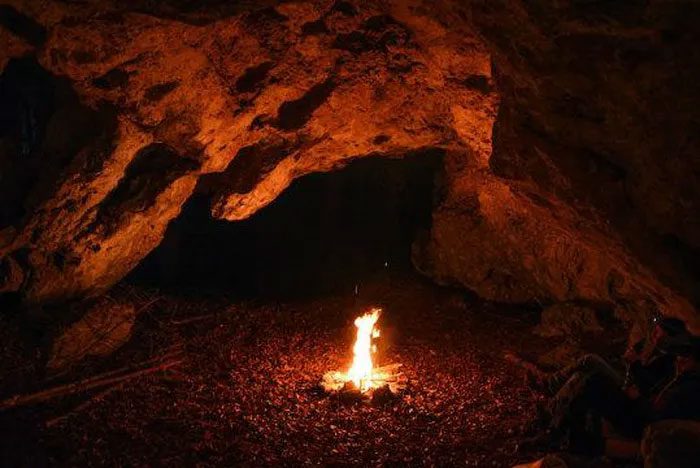Researchers at the University of York and Durham have examined a collection of carved stones, known as plaquettes, currently held at the British Museum.
A new study reveals that these stones were carved with artistic designs approximately 15,000 years ago and exhibit heat-induced patterns, indicating that they were sculpted near the flickering light of a fire, as discovered in the new research.

Campfire in a cave. (Illustrative photo).
These artifacts may have been created using stone tools by the Magdalenian people, a prehistoric hunter-gatherer culture that thrived from 23,000 to 14,000 years ago.
The researchers identified pink heat damage patterns around the edges of some stones, providing evidence that they were placed near a fire.
Following their discovery, the researchers attempted to recreate the stones and used 3D modeling and virtual reality software to visualize the pieces as prehistoric artists would have seen them: in the light of a fireplace and with bright white carvings as they were first etched into the stone thousands of years ago.
The lead author of the study, Dr. Andy Needham from the Department of Archaeology at the University of York and Co-Director of the York Experimental Archaeology Research Center, stated: “Previously, it was thought that the heat damage seen on some of the plaquettes could have been accidental, but experiments with replica pieces showed that the damage is more consistent with intentional placement near a fire.”

Our ancestors mastered the skill of making fire 400,000 years ago.
“In modern times, we might think of art being created on a blank canvas in daylight or with a fixed light source; however, we now know that 15,000 years ago, humans created art around the fire at night, with flickering shapes and shadows.”
The researchers noted that working under these conditions would have significantly impacted how prehistoric individuals experienced the act of creating art. It may have triggered an evolutionary capability designed to protect us from predators, known as “Pareidolia”, where perception imposes meaningful interpretations such as the shapes of animals, faces, or patterns where none exist.
Dr. Needham added: “Creating art by firelight would have been a very visceral experience, activating different parts of the human brain. We know that flickering shadows and light enhance our evolved ability to see shapes and faces in inanimate objects, which may help explain why people often incorporated natural features in stones to depict animals or artistic forms.”
The Magdalenian era witnessed a flourishing of primitive art, ranging from cave paintings and the decoration of tools and weapons to carvings on stone and bone.
Co-author of the study, PhD student Izzy Wisher from the Department of Archaeology at the University of Durham, remarked: “During the Magdalenian period, conditions were very cold and the landscape was more exposed. While humans adapted well to the chill, wearing warm clothing made from animal hides and fur, fire was still crucial for warmth. Our findings support the hypothesis that the warm light of the fire would have made it a social focal point for gathering, storytelling, and creating art.”
“At a time when much time and effort would have been spent searching for food, water, and shelter, it is fascinating to think that people still found the time and capacity to create art. This indicates that such activities were part of what made us human for thousands of years and reflect the cognitive complexity of prehistoric individuals.”


















































